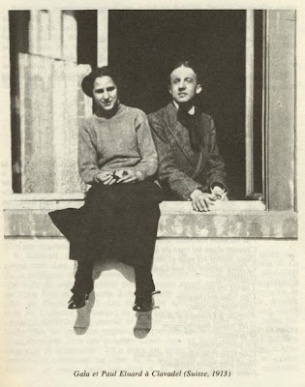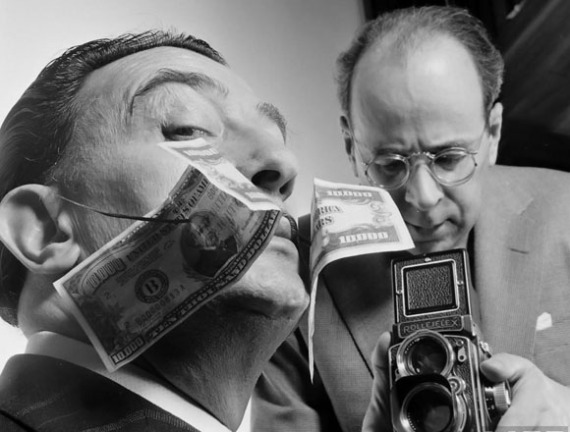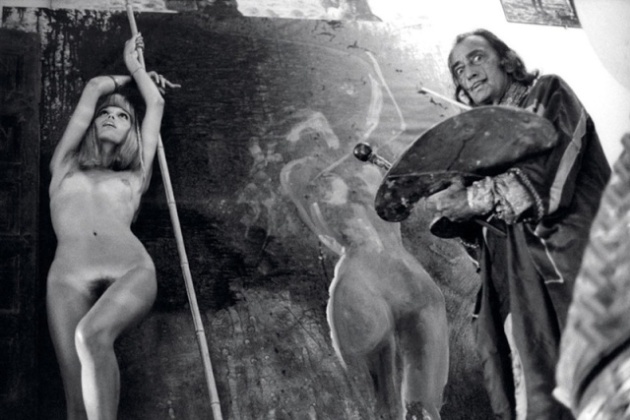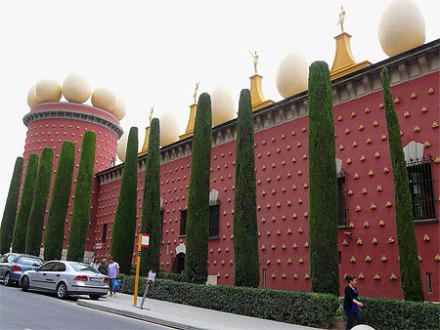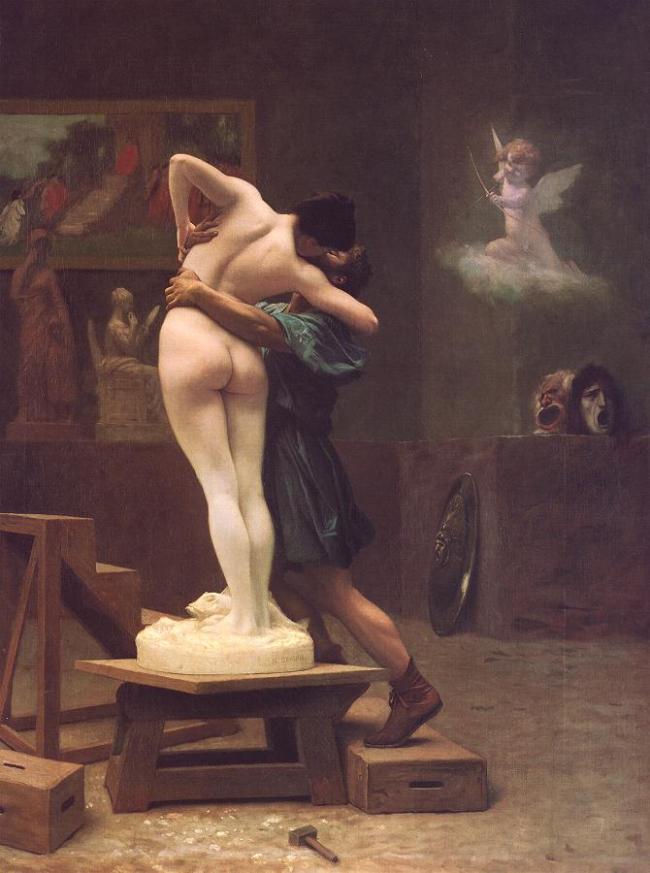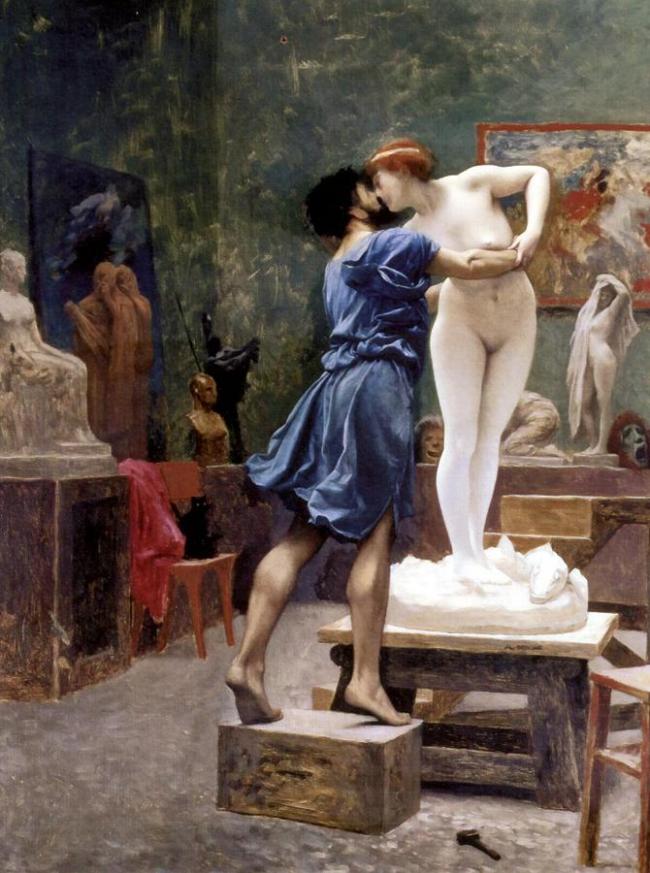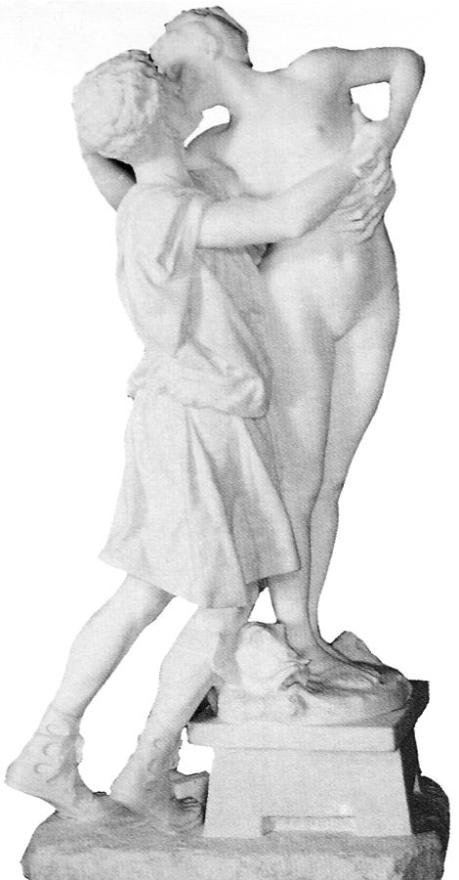Français:
Les préraphaélites c’est un groupe d’artistes qui, à la fin du XIXème, décida de dépoussiérer un peu le monde de la peinture en la modernisant par le truchement d’une révolution sur la notion de réalisme et de composition des oeuvres picturales qui suivaient des règles inchangées depuis…la Renaissance! Les trois figures principales en étaient Hunt, Millais et Rosetti qui opérèrent de 1848 à 1853 sous le terme de “The Pre-Raphaelites Brotherhood”. Ils étaient également modernes dans leur façon de mémoriser et de reproduire comme tels les paysages à la manière d’une photographie; mais aussi dans leur compréhension que l’art pouvait plaire aux masses et leur façon de s’adapter.
Dans mon article j’aimerais -suite au visionnage d’un splendide documentaire sur la BBC- présenter ici quelques peintures modernes pour l’époque et tenter d’expliquer pourquoi.
-

-
The Finding of the saviour in the Temple
-

-
The Light of the Wolrd
-

-

-
The Beloved
-

-
The Palace of Art
-

-
Cherry Ripe
-

-
Bubbles
-

-
Bubbles ad (pears soup)
Le premier tableau s’intitule ‘The Finding of the Saviour in the Temple’, par Hunt. On témoigne ici de la scène biblique où, la Sainte famille qui pensait avoir perdu Jésus, le retrouve dans le Temple, en train de prêcher aux anciens rabbins juifs. Celui-ci l’a peint alors qu’il séjournait en Palestine et on peut en effet admirer les détails architecturaux orientaux ainsi que les tissus . De plus, Jésus est ici représenté avec les caractéristiques d’un habitant de Galilée, chose assez rare pour l’époque où on tentait de le dépeindre avec des traits plus ‘européens’. Le travail sur le tissu est remarquable comme on peut le voir sur la tunique de Jésus qui semble violette mais, lorsqu’on l’admire de près, nous révèle des rayures bleues et rouges. A droite, on trouve un aperçu du futur de Jésus de par la présence du mendiant mais aussi de ces deux morceaux de bois qui évoquent une croix et font immédiatement penser à la prochaine crucifixion. La perspective nous donne un aperçu de la narration simultanée, en effet, en arrière-plan, une autre scène se déroule, libre au spectateur de regarder où bon lui semble.
Le second tableau s’intitule ‘The Light of the World’, par Hunt (1851) qui est sans doute l’une des toiles les plus vues au monde car elle fut en effet plus tard amenée à faire une sorte de tour du monde et elle fut montrée à travers les Etats-Unis notamment et plus de 7 000 000 de personnes l’auraient vu. Hunt l’aurait réalisé de nuit et on ne peut qu’admirer le magnifique travail sur la lumière. Le personnage est une fois de plus Jésus et de par son travail de nuit, Hunt a tenté l’expérience de la dimension spirituelle de l’homme. Le contraste entre lumière et zones d’ombre nous rappelle bien sûr l’éternel parallèle entre la vie et la mort. Si l’on regarde la lanterne, on peut voir un croissant de lune et donc comprendre que le message d’Hunt n’est pas seulement chrétien mais il appelle à toutes les religions.
Hunt réalisa une seconde toile (1900) du même nom où la lumière et la symbolique de la lanterne changent.
Le troisième tableau est ‘The Beloved‘, par Rosetti. On voit ici l’éventail de la beauté féminine. En effet, la figure centrale (Marie Ford) symbolise la beauté britannique par son teint. Autour d’elle, nous voyons des femmes aux cheveux bruns et au teint plus mat. Au fond, une femme aux traits indiens alors qu’au premier plan, nous trouvons une femme noire africaine; symbole non innocent pour l’époque: ici Rosetti fait clairement allusion aux gens réduits à l’esclavage aux Etats-Unis en cette époque.
A la fin du XIXème, le domaine de l’illustration littéraire devint également très populaire et prisé et les trois préraphaélites se rejoingnirent autour de l’illustration des poèmes de Tennyson. Cette période fut surnommé ‘the golden age of illustration”. L’artiste était impliqué de A à Z dans l’élaboration de son illustration et donnait même parfois des consignes directes au graveur. ‘The Palace of Art‘, par Rosetti est un bel exemple d’illustration. Il illustre les vers suivants:
‘or in a clear wall’d city on the sea
Neon gilded organ-pipes, her hair
Wound with white roses, slept St. Cecily;
An angel look’d at her.”
La gravure de Rosetti nous montre un ange qui fait bien plus que regarder Cécile, il se penche comme pour l’embrasser. Nous pouvons également admirer les détails comme le soldat, dans le coin gauche, au premier plan, qui mange une pomme; ou la ville en arrière-plan. Le jeu d’ombre et de lumière sur cette illustration certes en noir & blanc apporte toutefois une notion de luminosité. Rosetti fut fort malin de romantiser davantage la scène, de payer autant attention aux détails et en faisant des traits très délicats: le public qu’il visait était les femmes, principales consommatrices de livres illustrés.
Une autre grande tendance de l’époque était de peindre des enfants dans leur vie quotidienne, d’une manière très réaliste: ne pas les peindre souriant si tel n’était pas le cas, par exemple. Cherry Ripe (1879), par Millais est une réécriture de ‘Miss Boothby’ par Sir Reynolds. Ici, l’accent est mis sur le côté mignon de l’enfant: la dimension de la tête par rapport au corps est exagérée, l’enfant semble ne pas avoir de cou, son chapeau; mais surtout le fait que ses pieds soient un peu rentrés, typique des enfants. Néanmoins, la demoiselle n’en reste pas moins une lady en devenir: elle joint ses mains sur ses cuisses. L’enfant essaie donc de remplir au possible son rôle de modèle; mais elle est avant tout, une enfant qui essaie de poser.
Bubbles, une autre toile par Millais sera notre dernier exemple. C’est une image très personnelle car le modèle n’est autre que le petit fils de l’artiste, assis sur une bûche de bois, faisant des bulles de savon. Il médite sur les bulles qui peuvent exploser d’un moment à l’autre, métaphore de l’aspect temporaire de la nature et de l’homme: memento mori. La toile fut transformée plus tard en une pbulicité pour les soupes Pears et Millais adora l’idée, pensant que ce serait là une belle manière d’éduquer, de sensibiliser les classes populaires à l’art. Précusseur d’Andy Warhol? Bubbles devint le symbole de la commercialisation de l’art au XIXème.
Les préraphaélites étaient donc modernes dans la conception même de leur art, mais aussi dans la connaissance qu’ils pouvaient le commercialiser car ils étaient conscients du potentiel commercial de leur art qui est toujours exploité de nos jours (Ophelia, de Millais est la carte postale la plus vendue au Tate Britain, par exemple) et leur vie continue de passionner. Rosetti finit sa vie reclus et noyé dans les drogues et les femmes; Millais fut très populaire et devint lui-même part de la norme en devenant le président de la Royal Academy.
English:
The Pre-Raphaelites are a group of artists who, at the end of the 19th century, decided to revolutionize the art world introducing a new realism and a new conception of compositon: both did not change since The Renaissance! They were known as the ‘Pre-Raphaelite Brotherhood’ and existed from 1848 to 1953. The three main names were Hunt, Rosetti and Millais. They were also modern in their way apture landscapes in a photograph like way and created an art designed to please the masses.
In my article, I will focus on some paintings and try to show why they are seen as modern.
The first painting I chose is ‘The Finding of the Saviour in the Temple‘, by Hunt. He painted it while he stayed in Palestine and this can be seen in the careful details of the exotic architecture, in the clothes and in the fact Jesus is given the characteristic of the Galilean people in an era where it was more frequent to paint is as an European. It depicts the scene when the Holy Family came to Jerusalem thinking they lost their son but they found him in the Temple talking to the Jewish elders here. The work on the fabric is incredible: for example, we can be led to think Jesus’s top is purple when in fact it is made of a subtle work of red and blue stripes. We also witness simultneous narration through perspective: the audience can focus wherever it wants: another scene is happening in the background and on the right, we can see glimpse of Jesus’ future in the figure of the beggar, but also the two pieces of wood which obviously remind us of Jesus’ crucifixion.
The second painting is ‘The Light of the World‘, by Hunt (1851) which is one of the most seen paintings in the world for it did a tour, mainly in the USA and it was seen more than 7,000,000 times. Hunt painted it at night time, the character is Jesus again. Hunt was doing here an experiment, looking for the spiritual in man. The contrast between light and shadow echoes the one about life and death. Also, the pattern on the lamp are a crescent moon: Hunt’s aim was to show that there are no main differences between religions: we are all vulnerable.
Hunt painted this a second time in 1900 but changed the light and the pattern on the lamp.
The third painting is ‘The Beloved‘ (1865-66) by Rosetti which gives us a whole spectrum of female beauty. The central figure (Marie Ford) has a very Anglo-Saxon complexion, around her we have figures of darkened hair and complexion and in the back an Indian-looking figure. In the foreground, there is a black African female which represents the enslaved people; a big issue and symbol as it echoes slavery in the USA at tihe time and the Civil War.
In the late 19th century, book illustration increased and Millais, Hunt and Rosetti worked together on Tennyson’s poem. I chose here to speak about ‘The Palace of Art‘, by Millais which illustrates the following lines:
“or in a clear wall’d city on the sea
Neon gilded organ-pipes, her hair
Wound with white roses, slept St. Cecily;
An angel look’d at her.”
On the engraving, the angel is more than looking to Cecily, he is bending to her as if to kiss her. The work on details is also fantastic: we can see a soldier eating an apple and holding a spire, the city on the background and the delicate style of Millais. Though this is a black and white illustration, the contrast between light and shade creates an illusion of colour. Using such strategies: romanticizing the scene and using delicate lines, Millais was very clever: he appealled to the main audience of illustrated books: women.
Another great tendency to show realism in depicting children too: not to make them smile when they are not for example.
In Cherry Ripe, Millais (1879) is rewriting Sir Reynolds’ ‘Miss Boothby‘ but really puts the emphasis on cuteness: exaggerating the size of her head to her body, her hat, she has no neck, her toes are turned inwards slightly one to the other which is clearly how children sit. She is trying to pose while acting as a lady having her hand clasped on her nap.
Bubbles, is a very personal image for it shows Millais’s grandchild sitting on a log, blowing on bubbles. He is meditating on the bubbles which can burst at any moment: this is a metaphor for the temporary nature of life and human beings: memento mori. The painting was later used as an ad for Pears soup. And Millais, who was loved by his public, loved the idea and thought it was a good way to educate the masses to art. In this way, can he be seen as Warhol’s precursor? Bubbles became the symbol of the commercialization of art in the 19th century.
Therefore, the Pre-Raphaelites were modern in their way to build their art, but also by their knowledge that they could commercialize their art: they were aware of the commercial potential of their art and it continued to be exploited today (Millais’ Ophelia is the best-seller postal card at the Tate Britain). Also, their lives continue to fascinate: Rosetti ended recluse and lost on drugs and women; Millais sold out and became part of the establishment: he was elected President of the Royal Academy.
